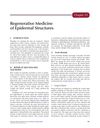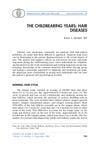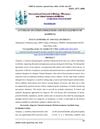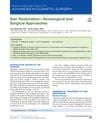Is this a good sign of progress on my corners, could this be indicative of my whole head? Is this regrowth? 4/7/2025
A 23-year-old male is using topical minoxidil and oral finasteride for hair regrowth, noticing some progress on his temples and seeking advice on whether this indicates overall scalp improvement. Users suggest patience, as regrowth can take time, and advise against a hair transplant, noting that the current treatment seems effective.
View this post in the Community →
Similar Community Posts Join
5 / 1000+ resultscommunity 9 months on fin and oral minoxidil (26M)
A user shared their positive experience with hair regrowth after 9 months of using 1mg finasteride daily and 2.5mg oral minoxidil every other day, with no side effects. Other users expressed various reactions, from skepticism to hope, and discussed their own experiences with similar treatments.
community 11 month hair update.. The minoxidil and finasteride really work miracles 😳😳😳
User "Jordan_cadagan" shares 11-month progress using minoxidil and finasteride for hair growth, with impressive results. Users discuss application methods, ice baths possibly helping, and daily dosages.
community 8 years fin/min, my long term results. 31m
A 31-year-old man successfully used oral minoxidil and finasteride for hair regrowth over eight years, experiencing minimal side effects like initial shedding and increased body hair. He credits these medications for preserving his hair despite a family history of baldness.
community Finastride hair texture change is wild
Finasteride changed the user's hair texture from wavy to curly, reverting after stopping. Minoxidil was more effective for temple hair regrowth than finasteride.
community “Dutasteride destroyed my hair” recently I noticed the same users
Dutasteride is reported by some users to worsen hair loss, while others believe it causes shedding before improvement. Finasteride and Minoxidil are also mentioned as treatments, with mixed results.
Related Research
6 / 1000+ results
research Artificial Intelligence in Patient Education for Androgenetic Alopecia: A Comparative Study of ChatGPT, Gemini, and Deepseek R1
ChatGPT 4.0 and Gemini 1.5 Flash are effective for educating patients about androgenetic alopecia, while Deepseek R1 is less reliable.

research Regenerative Medicine of Epidermal Structures
New treatments for skin and hair repair show promise, but further improvements are needed.

research The Childbearing Years: Hair Diseases
Different hair diseases affect people during childbearing years, with treatments ranging from medication to psychological support.

research An Update on Etiopathogenesis and Management of Alopecia
Personalized treatment plans combining natural and synthetic approaches are important for managing alopecia effectively.

research Androgenetic Alopecia: Overview, Epidemiology, Pathophysiology, and Treatment
Various treatments exist for hair loss, but more research is needed for better options.

research Hair Restoration: Nonsurgical and Surgical Approaches
Hair restoration can be achieved through non-surgical treatments like minoxidil, antiandrogens, phototherapy, and PRP procedures, or through surgical methods like hair transplantation. Continued treatment is needed to maintain results, and full results are visible after 12-18 months.